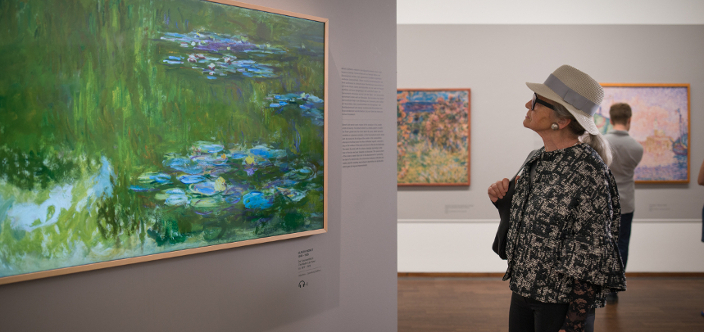[Interview] A New Way to Integrate Displays into the Living Space: Yves Behar on The Frame TV
on August 2, 2017
From refrigerators to audio equipment, product design is continuously becoming more thoughtful, taking into account people’s lifestyles and how they interact with their surroundings. Samsung Electronics’ latest devices reflect this growing trend, perhaps none more so than its recently launched lifestyle TV, The Frame.
Created in collaboration with world-renowned designer Yves Behar, The Frame is truly a game changer for the TV industry, transforming the conventional black box into a piece of art that adds aesthetic value to the home.
Samsung Newsroom sat down with Behar to discuss what inspired The Frame, his favorite moments working with Samsung and how he envisions the future of TV.

Q. Tell us a bit about the collaboration process between yourself and Samsung on The Frame.
Yves Behar: Samsung and my team at Fuseproject have been collaborating for almost a decade now, envisioning new ways that displays can be experienced in the home. For The Frame specifically, we wanted to explore how the display might fit into any room of the house by augmenting its use beyond a device to watch TV. This is where we came up with the concept of eliminating the black box, and replacing it with eye-catching artworks.
Q. You are known for experimenting with new concepts, materials and technologies. What drives your design decisions?
Yves Behar: My goal has always been to improve people’s daily lives – and thus the world – through design. To do so, I think it’s essential to be inspired by human behaviors and desires. By bridging behaviors and objects through design, we can discover new types of experiences in our everyday lives, all the while accelerating the adoption of new ideas.
Q. What inspired the design of The Frame?
Yves Behar: The core of The Frame is the experience it provides – one that allows users to enjoy a selection of artworks that are automatically displayed, and naturally dimmed and brightened throughout the day. Samsung and my team built every element of the TV from the hardware to the art platform on this foundation. The UX, for instance, is meant to emulate a digital art space, so we designed it to be simple and beautiful just like a gallery, with the artworks themselves as the primary visual focus.

Q. Were there any moments during your collaboration with Samsung on The Frame that are particularly memorable?
Yves Behar: Perhaps one of the most exciting moments was when we were demoing a prototype of The Frame we had built in San Francisco. We demonstrated the effect of adding sensors to a TV – a brightness sensor to adjust the backlight of the display and a motion sensor to turn the TV on or off depending on the presence or absence of a person.
Incorporating sensors posed a technical challenge, but was absolutely crucial to creating the experience we had designed. The concept was also an entirely new one! It was very exciting to showcase this technological advancement, and the passion and conviction I felt was shared between our joint teams.
Q. For you, personally, what has been the most impressive outcome of the partnership?
Yves Behar: Our design process was inherently collaborative; I could not imagine creating nearly as impactful work without Samsung’s close collaboration. Our ability to execute every detail of The Frame, from the sensors to the magnetic, interchangeable wooden bezels, so flawlessly is an achievement in itself.
For me, the most impressive aspect of the TV is its art platform, which features paintings and photographs from the world’s top galleries, as well as partners such as the Albertina Museum, LUMAS, Magnum Photos, Saatchi Art and Sedition. It’s really something to have instant access to hundreds of artworks, which are elegantly exhibited at a high degree of realism.

Q. What does TV mean to you?
Yves Behar: I consider myself to be a fairly typical consumer when it comes to watching TV. There are a few programs I enjoy watching, but for the majority of the day, my TV is turned off. In the past, I actually designed a piece of furniture to conceal it when it wasn’t in use.
The Frame is really a game changer, as it empowers me to keep my display out in the open while simultaneously adding to my home’s aesthetic value through new artworks. I think we are witnessing a new era for televisions, one where they are a portal into art, among other things.
Q. How do you foresee the future of TV?
Yves Behar: Despite the fact that technology in the home is becoming more discreet, the television will continue to play a role in our ever-evolving homes. By asking the questions no one else is asking, designers and manufacturers like Samsung will discover new ways to integrate displays into our living spaces.
It’s important that TVs are designed from an experience-led perspective, not a technology-driven one. However, adaptive technologies will enable us to create products that are more personal and less obtrusive. The Frame is a big step in the right direction, but getting rid of the black box is only just the beginning.
Q. What’s your hope for users of The Frame?
Yves Behar: It’s my wish that consumers will appreciate the introduction of art into their daily lives, and enjoy the value and inspiration that come with having a gallery-worthy work in their living space. All of the complexities and nuances of The Frame’s design come down to this simple experience.

